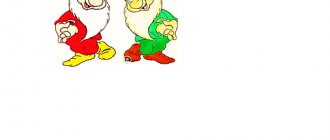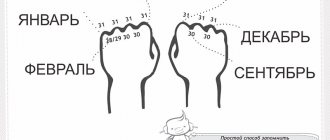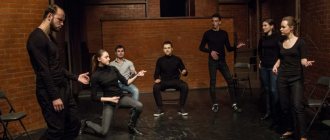Causes of stuttering in children
At risk are children whose parents have diseases of the nervous system, infectious or somatic nature. Children who suffer from nightmares, enuresis, as well as those who are anxious, irritable, vulnerable, or with a weak nervous system stutter more often. Bilingual children may also stutter.
The following factors can provoke stuttering in children:
- Features of intrauterine development. Difficult pregnancy, fetal asphyxia, injuries during childbirth;
- The baby's health status. Injuries, metabolic and trophic disorders, infectious diseases in a newborn;
- Physiological factors. Traumatic brain injury, concussion, organic brain disorders, intoxication, as well as diseases that weaken the central apparatus of speech (typhoid, measles, whooping cough, rickets, helminths, diseases of the throat and nose);
- Psychosocial factors. Fright, horror, fear in the baby, dysfunctional situation in the family (conflicts, stress), improper upbringing (pampering, punishment, unbalanced upbringing or upbringing of the “correct” child), the predominance of negative emotions and tension, severe mental trauma, affect;
- Features of speech formation. Parents did not pay attention to the fact that the baby spoke quickly or while inhaling, pronouncing sounds incorrectly. Excessive speech development activities with a child can also cause stuttering. For example, if parents overloaded the child with learning or used materials intended for older children;
- Another factor that provokes stuttering is the fast, nervous speech of the child’s closest relatives. He can imitate them, just like his stuttering relatives. If your baby has a dominant left hand, you should not retrain him, as this can also provoke a violation.
A strict, demanding and inconsistent attitude towards a child from parents, educators and other adults can also become a trigger for the development of stuttering.
Stuttering in preschoolers through the eyes of a speech therapist
Home Articles Popular information articles Our children
Speech therapy in medical institutions of Chelyabinsk:
Children's City Clinical Clinic No. 3 Children's City Clinic No. 12
Outwardly, stuttering manifests itself in the fact that speech is interrupted by unreasonable stops, hesitations, repetitions of sounds, syllables, words, and sometimes difficult pronunciation of individual sounds. The same child may stumble at the beginning, middle and end of words and phrases, on vowel sounds and on consonants. This occurs due to involuntary muscle contractions (convulsions) of the speech apparatus. Convulsions that occur in the speech apparatus can spread to the muscles of the face and neck. In children who stutter, the rate of speech is disrupted and it becomes very fast. Having started to speak, the child is afraid that he will not have time to express his thoughts and begins to rush. Over time, a fast pace becomes a habit. Speech becomes unclear, often incomprehensible to others. Sometimes preschool children experience speech disturbances in sound pronunciation, incorrect use of words, and construction of phrases. This makes stuttering more difficult.
When you stutter, your breathing becomes disrupted. Most often, the child speaks while inhaling rather than exhaling, or, after inhaling, he closes his mouth and cannot begin to speak for a long time. All this is accompanied by great tension. The complexity of this speech disorder lies in the fact that stuttering complicates the child’s free speech communication with people around him, affects the development of the communicative function of speech, distinguishing him unfavorably from his normally speaking peers, leaving an imprint on behavior and personality formation.
Stuttering usually occurs between the ages of 2 and 5 years, when active speech development begins. It is during this period of formation of phrasal speech that it is unstable, vulnerable, and prone to breakdowns. Most often, parents note that the child began to stutter after fright, illness, as a result of physical trauma (most often a head injury), speech overload, prolonged communication of the child with a stutterer (relative, friend in kindergarten), delayed speech development. However, all of the listed causes of stuttering may be present to a greater or lesser extent in the life of every child, but not everyone develops stuttering. The main reason is a weakened nervous system. It is not uncommon to find families where one of the parents stutters. Will a child have to stutter? No, not necessarily. A weakened nervous system is inherited; in this case, communication with stuttering parents can cause stuttering.
In the process of speech development, many children go through the so-called physiological stuttering, which is caused by the fact that the speech apparatus does not have time to verbally formulate thoughts that are ahead of speech. Physiological stuttering is superficially similar to real stuttering, but the repetitions of syllables or words are not convulsive in nature and are not fixed on certain sounds or words. Physiological stuttering is a “growing pain” that disappears independently and without a trace by the age of four. It can develop into real stuttering if the family does not have a normal, healthy environment and proper speech education.
The problem of stuttering can be considered one of the most ancient and complex in the history of the development of the doctrine of speech disorders. Different understandings of its essence have led to the formation of various methods for eliminating this speech disorder. Even now, at the beginning of the 21st century, it cannot be said that the mechanism of stuttering has been completely unraveled. Modern research and past experience suggest that stuttering in most cases is a neurosis and occurs due to various reasons that cause overstrain of the processes of excitation and inhibition and the formation of a pathological conditioned reflex.
Scientists' observations have shown that stuttering is a disease of the nervous system as a whole. Many preschool children with stuttering were found to have various disorders of higher nervous activity and physical health: increased irritability, touchiness, tearfulness, poor appetite and sleep, increased sweating, physical fatigue, enuresis.
Children who stutter often experience general motor tension, stiffness of movements, or, conversely, motor disinhibition and restlessness. Taking into account the above theory, a so-called comprehensive system of measures to eliminate stuttering was formed in Russia. The formation of a modern approach to overcoming stuttering was preceded by the search for various techniques and methods, including therapeutic and pedagogical influence on different aspects of the psychophysical state with the participation of different specialists. The goal of the complex method is to eliminate or weaken speech convulsions and disorders of breathing, voice, general motor skills and the formation of correct speech skills.
The complex of therapeutic measures includes medications, physiotherapy, therapeutic massage, therapeutic sleep, etc., which are carried out by a neurologist and physiotherapist. The ultimate goal of this work is to strengthen the patient’s physical condition and improve his nervous system. Pedagogical activities include speech therapy classes, the structure of which includes exercises for the development of breathing, voice, and speech motor skills. The most effective form of correctional work with preschoolers is group classes; individual classes are provided for children with severe stuttering. There can be from 2 to 6 stutterers in a group. Group classes have a number of advantages over individual ones. Most parents note that the child speaks well when alone, only when surrounded by listeners does hesitation appear. In other words, the speech of people who stutter is disrupted during communication. The more listeners or interlocutors, the more difficult it is to speak. Classes in a group are closer to the natural environment in a group of a kindergarten or educational center and at the same time create a gentle environment, since here the child feels equal among equals. The course of stuttering correction can be different - from 20 to 80 lessons.
Corrective classes should be carried out in a properly organized home daily routine. The correct regime must be understood as the child’s entire lifestyle: visiting a kindergarten, educational center, sports clubs, rest, sleep, nutrition, everyday life. Everything should help to heal and strengthen the baby’s nervous system.
I would also like to warn parents against the fashionable hobby of seeing their child as a comprehensively developed person. A training center, a foreign language, music, a sports section - this is what, in addition to visiting kindergarten, often falls on children's shoulders. To the above, parents also add classes with a speech therapist. Even for children with normal speech, such a load may be unbearable and may be the first step towards stuttering. First of all, parents must decide what the child needs most at this time. And if they came to the conclusion that the main thing is healthy speech, then they need to give up all additional stress. The child must come to speech therapy sessions with one of the parents. While attending classes, he masters techniques for preventing and overcoming speech cramps, together with the children he gets acquainted with the rules of speech, breathing techniques, voice exercises, exercises for coordinating speech with movement, etc., writes down didactic material to consolidate the skills of correct speech in exercises for home workouts. Outside the classroom, strengthening the skills of correct speech without hesitation falls on the parents, since the child will not be able to cope with the task on his own. He needs help in performing unusual speech exercises, providing psychological support, and stimulating correct speech.
Active involvement of the family in speech therapy work is undoubtedly one of the decisive factors ensuring the success of the process of overcoming stuttering. Unfortunately, parents often do not pay due attention to classes, do not attend them at all, shifting the responsibility to grandmothers, and their effectiveness is significantly reduced.
Speech therapy classes for preschoolers in a clinic are most often carried out according to the method of V.I. Rozhdestvenskaya. It involves eliminating stuttering in preschool children through the development of smooth, continuous speech skills.
This type of speech is based on several rules:
- inhale before speaking, talk as you exhale;
- consonant sounds are pronounced without tension, easily;
- vowel sounds are pronounced widely, loudly, it is on them that the emphasis is placed when pronouncing words - this gives smoothness to speech;
- in each word it is necessary to highlight the stressed vowel sound - it must be pronounced louder and longer than the other sounds of the word;
- All words of the phrase are pronounced in one breath, together.
Preschool children must learn one thing from all these rules - before starting to speak, they must take a deep breath and speak as they exhale, smoothly. Children learn all other speech rules by imitation. Speech therapy classes have their own structure and are aimed at mastering the rules of smooth, continuous speech, developing and consolidating the skills of such speech. Only by transferring the skills of smooth, continuous speech from speech therapy classes in the office to everyday life can you get rid of stuttering.
Gradually, as stuttering is eliminated, children can switch to normal speech. Speech therapy classes begin with diaphragmatic breathing; the speech therapist begins to develop the skills of short deep breaths and long speech exhalations. Then voice exercises, articulatory exercises, exercises for coordinating speech with movement and speech exercises are carried out, which involve consolidating the skills of smooth continuous speech in different types of speech. This includes conjugate-reflected speech, answers to questions, poetic speech, retelling, composing an independent story on a given topic or a series of pictures.
All classes are conducted by a speech therapist in a playful way. I will dwell on some types of speech exercises. Speech exercises for coordinating speech with movement are of great importance in classes for preschoolers. The poetic rhythm of speech play and the performance of movements corresponding to the text distract the child, relieve and facilitate speech, contribute to the formation of skills in the first rule of continuous smooth speech - inhalation and speech as you exhale, and slow down the rapid pace of speech. These exercises strengthen the motor system, muscles, relieve stiffness in the muscles of the speech apparatus, help regulate the processes of inhibition and excitation, and develop dexterity. The next type of speech exercises are board games, used to develop the skills of smooth, continuous speech. In some games, children gain skills in pronouncing sentences from pictures, first in three words, then in four; in others, they learn to form two or three sentences related to each other, which is the beginning of the formation of skills for smooth, continuous speech in retelling.
Poetic speech is an indispensable material for speech work. Poetic speech is convenient for reinforcing all the rules of correct speech: orderly breathing, leisurely pace, unity, expressiveness. The speech therapist teaches you to read poetry at a slow pace, in a chant. At the beginning of each line, a deep breath must be taken, and all the words of the line are pronounced together. In conclusion, I would like to repeat once again that there are no quick and easy ways to eliminate stuttering. A good result is the result of systematic work by the child and parents. And even if you can’t get rid of stuttering completely, there will definitely be an improvement. This will make the child’s situation easier and will help him establish himself in life as a full-fledged and equal member of society.
THOSE. Babenko, chief speech therapist of the city, MUZ DGP No. 14
Based on materials from the newspaper “On Health” (issue No. 9, June 2011)
Print version








